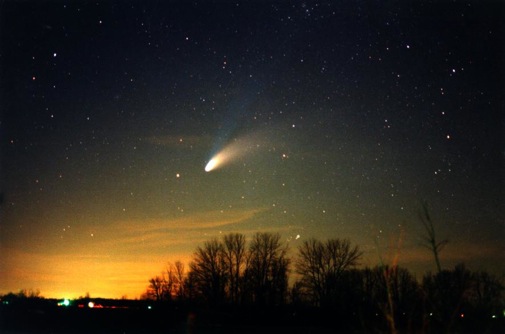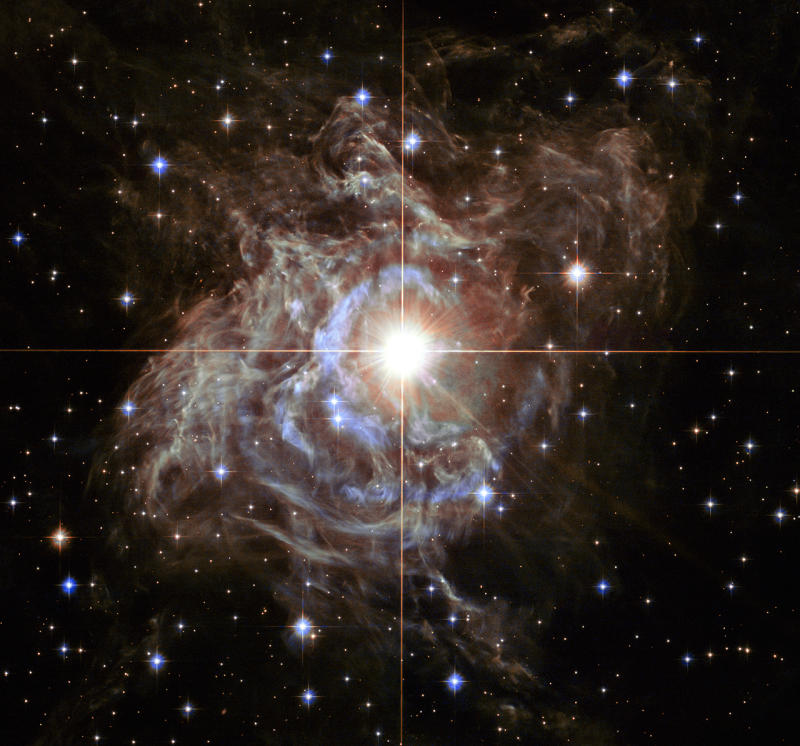
As Comet ISON hurtles toward the sun, its million-year-long journey through our solar system may end with its violent death — or a spectacular sky show.
On Thanksgiving, when the comet rounds the sun, professional and amateur astronomers alike will await ISON’s fate with bated breath. Its tail may get ripped off by a cloud of solar particles, or the sun’s brutal radiation and pressure may demolish it completely.
But if ISON makes it out alive, stargazers say, it could provide a breathtaking show visible to the naked eye and possibly live up to the name “Comet of the Century,” as some astronomers have dubbed it.
“On Friday, we’ll all be delighted to see its beautiful face as it then comes around the sun,” said Jim Green, director of NASA’s planetary science division. “Then between Thanksgiving and Christmas, it will fly over the North Pole — a very nice holiday comet.”
ISON is a lone traveler originating from a giant population of comets at the very edge of the solar system.
“ISON is very special,” Green said. “What makes it different is where it comes from — the further reaches of the sun’s gravity.”
The distance from the Earth to the sun is an AU, or astronomical unit; Pluto is 40 AU from the sun. Comet ISON began its journey 100,000 AU away from us.
It comes from a place called the Oort cloud, a loose nebulous sphere containing billions of icy, rocky objects. Detected comets from the Oort cloud are rare, probably only a handful per century, Green said.
For all of human history — at least a million years, according to NASA — this comet has been heading toward the sun. On Thanksgiving, ISON will reach perihelion, or the point in orbit where it is closest to the sun. Green calls the comet a “sungrazer” since it will come within a hair of the sun, swing around it and slingshot back outward.
But experts aren’t sure it will come out the other side intact. “Comets tend to be delicate, so it may actually break up,” said Adam Block of the University of Arizona’s Mount Lemmon SkyCenter.
Comets are mostly made of ice, with some dust and soil and rocks mixed in, and so any number of destructive things could happen to ISON. First, intense solar radiation will boil the water in the comet as it gets closer to the sun. It could face total disintegration, or survive initially and break apart later. Or the sun could send out an unfortunate burst of solar material called a coronal mass ejection that would pull off the comet’s tail.
Both space-based observatories and ground-based solar telescopes will watch the comet closely, detecting how the shape and composition of the comet evolve in real time.
“We can watch the whole thing unfold,” said Block, who hopes it will come back around even brighter and with a big tail.
If ISON survives the close shave, the comet will likely look its best for the first weeks of December as it passes close to Earth.
As it careens along, ISON will be spraying out dust, water and carbon dioxide from the faraway parts of the solar system into our neighborhood — all of which will reflect sunlight. There are no worries about a collision with Earth, although roughly 40 percent of our water has come from space bombardments like comets and asteroids, said Green.
If the comet’s ice does dissipate, the remaining rocky material could just continue to orbit the sun. For instance, the famous Leonid meteor shower that just peaked last week are the leftovers of an old comet.
ISON, detected in September 2012, was named for the international collaboration of scientists working on the project, the International Scientific Optical Network.
The original excitement came from when it was further than the orbit of Jupiter, shining brightly, and many comet scientists thought it would be massive.
“It started out being very promising, but we now know from observation that it’s probably fairly small,” Green said, estimating a size of 2 kilometers — about the distance from the Capitol to the Washington Monument.
If you’re an early riser, you may be able to catch a glimpse now in the twilight before dawn, near the planet Mercury. But as it ventures closer to the sun, ISON will become increasingly harder to see. Block, an avid astrophotographer, suggests that comet-hunters wait until after perihelion.
If the comet survives, viewers should be able to see it during the first or second week of December, either with the naked eye or using binoculars. To take a photo, Block said a simple digital camera on a tripod should do the trick, with an exposure time of 10 to 30 seconds.
Before dawn, look for a prominent object with a bright tail pointing upward, advises Damian Peach, a British astrophotographer who has managed to capture the fleeting comet with stunning detail.
“Look to the southeast around 30 minutes before sunrise, and you may be able to see the comet with the unaided eye,” Peach said in an e-mail.





